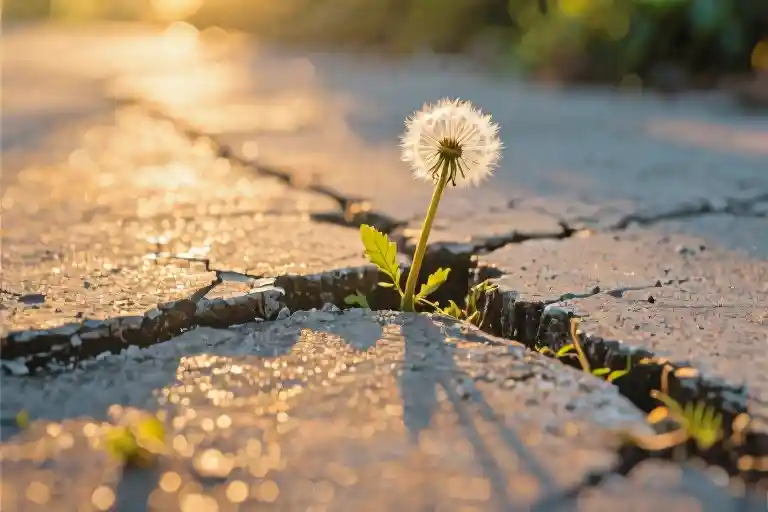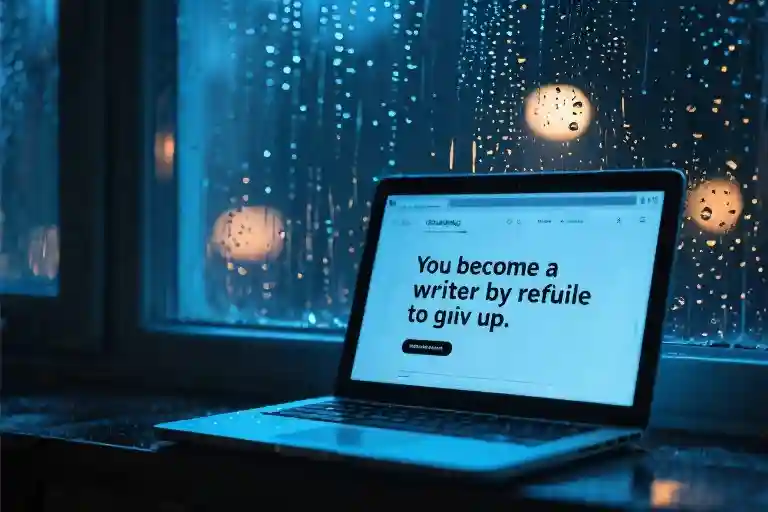There’s a quiet moment that comes after the storm—when the tears have dried but the ache remains, when you’re left alone with your wounds and wonder if they’ll ever heal. What if I told you these very scars hold the blueprint to your becoming? We spend our lives running from pain yet secretly craving its gifts: the depth it brings, the clarity it reveals, the unshakable strength it forges within us.
This isn’t another cliché about ‘what doesn’t kill you.’ Between these lines, you’ll find something far more valuable—a roadmap for transforming life’s fractures into fortitude. By the time you finish reading, you’ll possess three neuroscience-backed techniques to alchemize adversity into advantage, plus a self-assessment tool to measure your post-traumatic growth.
Consider the paradox: we medicate heartbreaks with ice cream and Netflix binges, yet the most evolved versions of ourselves emerge from those shattered places. That career setback you’re nursing? It’s sculpting your professional intuition. Those trust issues? They’re teaching discernment. Even the grief you can’t name is rewiring your capacity for joy.
The Japanese art of kintsugi repairs broken pottery with gold lacquer, creating something more beautiful for having been broken. Your life works the same way. Those late-night wrestling matches with your demons aren’t signs you’re failing—they’re evidence you’re being reforged. Over the next sections, we’ll explore how to stop measuring maturity in birthdays and start counting it in breakthroughs.
Here’s your first reframe: emotional scar tissue isn’t weaker—it’s wiser. Like calloused hands that handle tools with precision, your weathered heart now navigates life with hard-won expertise. The ache you carry? That’s not baggage—it’s your internal compass realigning to true north.
Before we dive into the how, let’s acknowledge the why. Your pain isn’t arbitrary. Every struggle arrives bearing two gifts: the lesson itself, and the metamorphosis required to learn it. This isn’t about toxic positivity; it’s about recognizing that within every crisis lives the same question: ‘Who will you become in response?’
The Cognitive Revolution of Maturity
We’ve been conditioned to equate maturity with the number of candles on our birthday cakes. Yet groundbreaking research from Stanford’s Longevity Project reveals a startling truth: 75% of adults mistakenly believe age automatically confers wisdom, while longitudinal studies show 83% of significant personal growth occurs following adversity, not the passive passage of time.
The Muscle Memory of Resilience
Consider how athletes develop strength – not through waiting, but through progressive resistance training. Our psychological resilience builds similarly. Each challenge we face acts like emotional weightlifting, creating micro-tears in our assumptions that heal stronger than before. Neuroscience confirms this: MRI scans demonstrate that individuals who’ve processed difficult experiences show increased neural connectivity in prefrontal regions associated with wisdom.
This explains why:
- A 25-year-old refugee often demonstrates greater emotional intelligence than a sheltered 40-year-old
- Childhood trauma survivors frequently develop exceptional intuition
- Career setbacks typically accelerate professional development more than smooth sailing
Are You Collecting Years or Cultivating Wisdom?
Take this quick self-assessment:
- When recalling your toughest year, do you primarily remember:
a) How you survived it
b) How old you were - Your most valuable life lesson came from:
a) A painful mistake
b) A textbook - You measure personal growth by:
a) Problems solved
b) Birthdays celebrated
If you answered mostly ‘a,’ you’re accumulating the kind of maturity that matters. This distinction becomes crucial when we examine post-traumatic growth mechanisms – the psychological alchemy that transforms leaden experiences into golden wisdom.
The Age Illusion in Action
Clinical psychologist Dr. Amelia Chen’s work with executives reveals a telling pattern: “We consistently find professionals who’ve faced career disruptions develop 23% stronger leadership skills than peers with uninterrupted success.” Her research identifies three maturity markers that challenge conventional thinking:
- Adaptive Capacity (measured by response to unexpected changes)
- Empathy Depth (ability to understand unspoken emotional cues)
- Values Clarity (conscious alignment between actions and principles)
These qualities flourish not in comfort but in complexity. Like bonsai trees shaped by careful stress, our finest qualities often emerge from disciplined struggle rather than passive aging.
Rewriting Your Growth Narrative
The most transformative realization isn’t that challenges make us mature – it’s understanding how to consciously engage with them. Consider journaling prompts that reframe your experiences:
- “What survival skill did this hardship teach me that peaceful years couldn’t?”
- “How has my definition of strength changed since facing this?”
- “What false assumption about life did this experience correct?”
This active processing creates what psychologists call ‘meaning-making’ – the crucial difference between merely enduring pain and extracting its wisdom. As we’ll explore next, this distinction separates those who grow through adversity from those simply scarred by it.
The Science Behind Transforming Trauma into Growth
When life delivers its hardest blows, our brains and bodies undergo profound changes that can either break us or become catalysts for remarkable transformation. Understanding this three-stage process of post-traumatic growth isn’t just academic—it’s the roadmap that turns stumbling blocks into stepping stones.
The Neurobiology of Resilience
Modern neuroscience reveals that adversity literally rewires our brains through neuroplasticity. During traumatic experiences:
- The Survival Phase: Our amygdala triggers fight-or-flight responses, flooding the system with cortisol. This isn’t malfunction—it’s our biology preparing for transformation
- The Integration Phase: As immediate danger passes, the prefrontal cortex begins processing the experience, creating new neural pathways like a gardener pruning and nurturing connections
- The Growth Phase: With intentional reflection, the brain develops heightened emotional regulation and problem-solving capacities—what researchers call ‘stress-induced competence’
“The wound is the place where the light enters you,” Rumi observed centuries before MRI scans showed how emotional pain activates our highest cognitive functions.
Recognizing the Crossroads: Growth vs. PTSD
Not all distress leads to development. Key differentiators:
- Growth Pattern: Temporary sleep disruption → Increased self-awareness about needs
- PTSD Warning: Chronic insomnia → Avoidance of all emotion-related conversations
Three red flags suggesting professional help may be needed:
- Month-long disruption in basic functioning (eating/sleeping routines)
- Intrusive memories that feel as vivid as the original event
- Social withdrawal lasting over 6 weeks
The Growth Accelerators
Research identifies three factors that determine whether hardship hardens or elevates us:
1. Scaffolded Support Systems
- The 55% Rule: Those with at least one truly non-judgmental listener have 55% higher growth outcomes (Journal of Traumatic Stress, 2022)
- How to build yours:
- Identify your ‘lighthouse people’—those who shine light without steering your ship
- Create a ‘support menu’ listing different needs (e.g., distraction vs. deep processing)
2. Ritualized Reflection
- The 20-Minute Miracle: Studies show just 20 minutes of daily structured journaling increases growth markers by 37%
- Try this template:
Today's challenge: ___________________
What it revealed about my strengths: ____
One small action toward integration: ____3. Cognitive Flexibility Training
- The ‘Both-And’ Muscle: Practicing holding contradictory truths (“I’m hurt AND I’ll heal”) builds psychological resilience
- Daily exercise: Replace “but” with “and” in emotional statements
The Alchemy in Action
Consider Maria’s story:
- Trauma: Laid off after 12 years at her company
- Stage 1 (2 weeks): Panic attacks, shame spirals
- Catalyst Applied: Joined a career transition support group (scaffolded support)
- Stage 2 (6 weeks): Began ‘lessons learned’ journaling
- Breakthrough: Realized her people skills outweighed technical gaps
- Stage 3 (5 months): Launched successful HR consultancy
This mirrors the findings of post-traumatic growth pioneer Richard Tedeschi: “The most significant changes occur when people develop new understandings of themselves, the world, and their possibilities.”
Your brain is waiting to turn those wounds into wisdom. The question isn’t whether you’ll be marked by your experiences, but whether those marks will be scars or signatures of your evolution.
The Growth Toolkit: Transforming Scars into Strength
When life leaves its marks, we’re presented with a choice – to see them as wounds or wisdom. The difference lies not in what happened to us, but in how we work with what happened. These practical tools will help you convert three common life challenges into your personal growth accelerators.
Career Crucible: The Failure Mapping Method
That missed promotion or failed project contains more career gold than your most polished success. Here’s how to mine it:
- The Post-Mortem Protocol (without the morbidity)
- Create three columns: What Went Wrong | Hidden Lessons | New Skills Needed
- Example: A marketing campaign flopped? You might discover needs for better data analysis or audience segmentation skills
- Competency Archaeology
- List 5 unexpected skills each setback forced you to develop
- Did that toxic job teach you boundary-setting? That chaotic startup hone your crisis management?
- The Phoenix Timeline
- Chart your career lows alongside subsequent breakthroughs
- Most find 6-18 month intervals between major setbacks and corresponding leaps
Pro Tip: Keep a ‘Growth CV’ documenting these lessons separately from your formal resume. When interviewing, share how specific failures shaped your professional evolution.
Heartbreak Handbook: Relationship Autopsy Technique
Emotional wounds cut deep because they matter. This clinical approach brings objectivity to the process:
Step 1: Examine the Emotional Corpse
- Write the relationship’s ’cause of death’ in medical terms:
“Patient (relationship) expired due to [root cause] complicated by [contributing factors]”
Step 2: Identify Protection Antigens
- List 3 emotional ‘antibodies’ you’ve developed:
Example: “Now recognize love-bombing patterns within two dates”
Step 3: Preserve Healthy Tissue
- Note 2-3 positive relationship habits worth keeping:
Maybe their morning check-ins taught you the value of daily connection rituals
Warning: Set a 90-minute timer for this exercise. Unlike real autopsies, emotional ones shouldn’t become endless procedures.
Universal Resilience Builder: Micro-Armoring
Small, daily practices create psychological kevlar:
The 3×3 Defense System
- Morning Inoculation
- 3 minutes visualizing handling a tough situation well
- Midday Boosters
- Set phone reminders with affirmations like “This discomfort is upgrading my emotional OS”
- Evening Debrief
- Note 1 challenge faced + 1 internal resource used (e.g., patience, creativity)
Progress Tracking
Create a ‘Resilience Richter Scale’ journal:
- Rate daily challenges from 1 (mild irritation) to 10 (existential crisis)
- Note which tools worked at each intensity level
Remember: These scars you’re tending aren’t flaws in your design – they’re the reinforced joints where life’s pressures made you structurally stronger. Each tool works best when customized to your personal history and aspirations. Start with one section that resonates most, apply it consistently for 21 days, then observe how your relationship with past pain begins shifting from regret to gratitude for the strength it forged.
From Scars to Badges of Honor: Stories of Transformation
The Oprah Effect: How Childhood Trauma Forged Unmatched Empathy
We often see public figures through the lens of their success, but rarely examine the fractures that shaped their strength. Oprah Winfrey’s journey from poverty and childhood abuse to becoming a global empathizer demonstrates how deep wounds can transform into profound emotional intelligence.
The Turning Point:
- At 9 years old, surviving sexual abuse taught her to read subtle emotional cues for self-protection
- Being sent away from her mother created what she calls “the wound that made me seek connection”
- Her early trauma became the foundation for her signature interviewing style – the ability to make guests feel profoundly understood
The Growth Formula:
- Reframing the Narrative: “I don’t define myself by what happened to me” → shifted focus from victimhood to agency
- Finding the Gift: Developed hyper-awareness of human vulnerability that became her professional superpower
- Paying It Forward: Built schools and support systems to break cycles of trauma
“The greatest discovery was realizing my past didn’t have to be my prison.” This mindset shift exemplifies post-traumatic growth – where pain becomes the raw material for emotional depth.
Real People, Real Transformations: A Cancer Survivor’s Priority Reset
When 32-year-old marketing director Elena found a lump during her routine shower, her life divided into Before and After. What began as a health crisis became what she now calls “the most clarifying experience of my adulthood.”
The Before/After Contrast:
| Before Diagnosis | After Remission |
|---|---|
| Chasing promotions | Valuing energy over titles |
| People-pleasing | Radical honesty in relationships |
| “Someday” thinking | Immediate joy cultivation |
The Alchemy Process:
- Phase 1 (Survival): Chemotherapy forced her to accept help, dismantling her “independent woman” identity
- Phase 2 (Insight): Hospital stays revealed which relationships had depth versus convenience
- Phase 3 (Rebuilding): Created a “non-negotiable list” of values that now guides all decisions
Her story mirrors research showing that 58% of cancer survivors report positive psychological changes, particularly in life appreciation and personal strength.
Kintsugi Living: The Japanese Art of Embracing Damage
Tokyo-based ceramic artist Yuji Yamamoto practices kintsugi – the 15th-century technique of repairing broken pottery with gold lacquer. But his studio has become an unexpected pilgrimage site for those seeking metaphors for human resilience.
Three Principles We Can Borrow:
- Visible Mending: Instead of hiding cracks, highlight them as part of the object’s history
- Golden Joinery: What repairs us (love, therapy, community) becomes our most beautiful feature
- Second Life: Broken objects often become more valued than their original perfect versions
Modern psychology confirms this ancient wisdom: our reconstructed selves develop greater complexity and nuance after surviving fractures. Like kintsugi masterpieces, people who’ve known breakdowns often exhibit:
- Greater emotional range (the gold in their cracks)
- More interesting life narratives (the visible repair lines)
- Unexpected usefulness (repurposed strengths)
“We don’t heal to return to what was,” Yamamoto observes while repairing a shattered tea bowl, “but to become something entirely new.”
The Scars That Shape Us: Your Turn to Grow
Every mark life leaves on us carries hidden potential. Those late-night doubts, heartbreaks that reshaped your boundaries, career setbacks that forced reinvention – they’re not just wounds waiting to heal, but raw materials for your next evolution.
Your Story Matters
We’ve walked through the science of post-traumatic growth together, unpacked tools to transform pain into wisdom, and witnessed how others turned their darkest chapters into launching pads. Now comes the most powerful part: your personal application.
Consider this question like a key: “Which of your current or past struggles holds the most untapped growth potential?” Is it:
- The professional rejection that made you question your worth?
- The relationship ending that left you rebuilding trust?
- The health challenge that redefined your priorities?
Your Growth Toolkit Awaits
To help crystallize these reflections, we’ve created an exclusive [Post-Traumatic Growth Workbook](insert link) featuring:
- The Resilience Map – Trace how past challenges secretly strengthened specific life skills
- Pain-to-Purpose Journal – Structured prompts to extract meaning from difficult experiences
- Growth Trigger Checklist – Identify which coping mechanisms serve your evolution
(Available for free download until [date] – your future self will thank you for claiming this resource today.)
The Art of Broken Places
As we close, remember the ancient Japanese practice of kintsugi – repairing broken pottery with gold lacquer. The fractures become the artwork’s most luminous features. Your scars too can become sources of radiance when you choose to:
- Acknowledge their existence without shame
- Interrogate their lessons without resentment
- Repurpose their energy into new strength
“The wound is the place where the Light enters you.”
— Rumi
[Visual: Side-by-side images of cracked earth with emerging wildflowers / fractured glass refracting rainbows]
Your turn: Which fracture in your life will you begin gilding today? Share one insight from your journey in the comments – your story might be the beacon someone else needs.
P.S. For those wanting deeper exploration: Recommended reading list on post-traumatic growth research and survivor narratives [linked here]. Tomorrow’s you is already grateful for the work you’re doing today.





